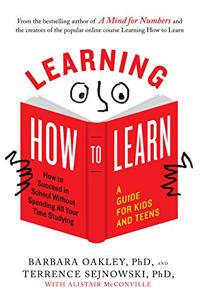
Want to learn the ideas in Learning How To Learn better than ever? Read the world’s #1 book summary of Learning How To Learn by Barbara Oakley, Terrence Sejnowski, et al here.
Read a brief 1-Page Summary or watch video summaries curated by our expert team. Note: this book guide is not affiliated with or endorsed by the publisher or author, and we always encourage you to purchase and read the full book.
Video Summaries of Learning How To Learn
We’ve scoured the Internet for the very best videos on Learning How To Learn, from high-quality videos summaries to interviews or commentary by Barbara Oakley, Terrence Sejnowski, et al.
1-Page Summary of Learning How To Learn
Software development is a job that constantly requires new things to learn. The author loves this fact because it’s what keeps the job interesting and challenging.
Coursera is a website that offers free online courses. Learning How to Learn is one of those courses. It was developed by Barbara Oakley and Terrence Sejnowski from University of California, San Diego.
The following are the key points from this course that help me to be a better developer and, in general, a better learner.
“Focused” and “Diffused” Modes
When you’re learning, there are times when you focus and times when your mind wanders. Both modes allow your brain to learn something new. So — take breaks, meditate, think about other things, and give yourself plenty of time in both modes.
There’s a technique where you work for 25 minutes and then take a break for 5 minutes. You can change the time lengths based on what works best for you. The important thing is to have regular breaks throughout your day. There are several applications that help with this process, such as Pomodoro Time.
Chunking
The best way to learn something is to break it into smaller concepts. It’s like putting together a puzzle, but instead of just learning the individual pieces, you learn how they fit together and become more familiar with them.
First, survey and prime by scanning a book or the syllabus of a course to get an idea of what you’re learning. Then, observe an example and do it yourself. Do it again in different contexts until you’ve mastered the skill.
So, let’s say I was learning React and I found Tyler McGinnis’ awesome course. To apply this suggested process, I would first look over all the units to get a general idea of what he covers. Then, I’d follow along closely as he builds an example application. After that, I’d build my own application. Finally, I’d apply those learnings into the new features we’re developing in React at my job.
Beware of Illusions of Competence
There are many ways to feel like you’ve learned something. For example, thinking that you know how to get a solution is one of the most common illusions of learning. Highlighting or underlining can also lead to this illusion of learning. However, taking notes that summarize key concepts is more effective than either highlighting or underlining.
Recently, I found a great Chrome extension called Highly (you should use this!). It makes it easy to highlight anything on the web. When you’re done highlighting an article, you get a beautiful summary of everything you highlighted. This is immensely useful to me.
I try to be careful about what I highlight in my notes. The fewer takeaways, the more likely that I’ll actually remember them later. This ties well into the next point…
Recall
Dr. Oakley quotes Dr. Jeff Karpicke’s research to support the scientific idea of taking a couple minutes to recall information you’re trying to learn. This is one way you can move something from short-term memory into long-term learning, and even recalling information in different physical environments can help your brain grasp it better.
After you finish reading this article, take a moment to reflect on what you read. It will help you remember the information better.
Bite-Sized Testing
While you are learning new material, it’s important to check your progress in order to avoid or overcome illusions of competence. One way to do this is by recalling what you have learned.
It’s not important that you pass these tests without making any mistakes. Mistakes are a natural part of the learning process, and they’re an important step towards solidifying your knowledge.






